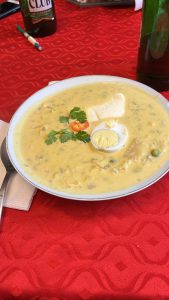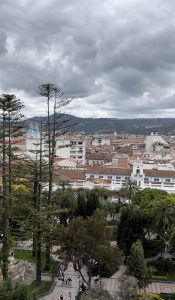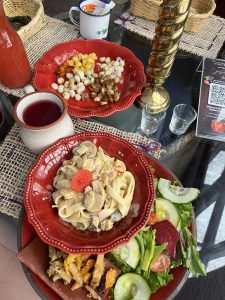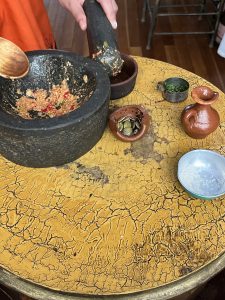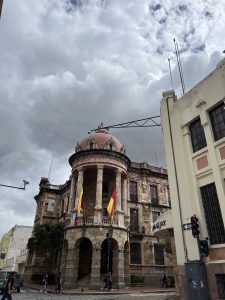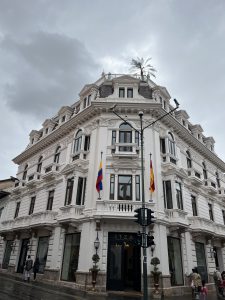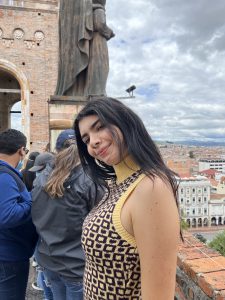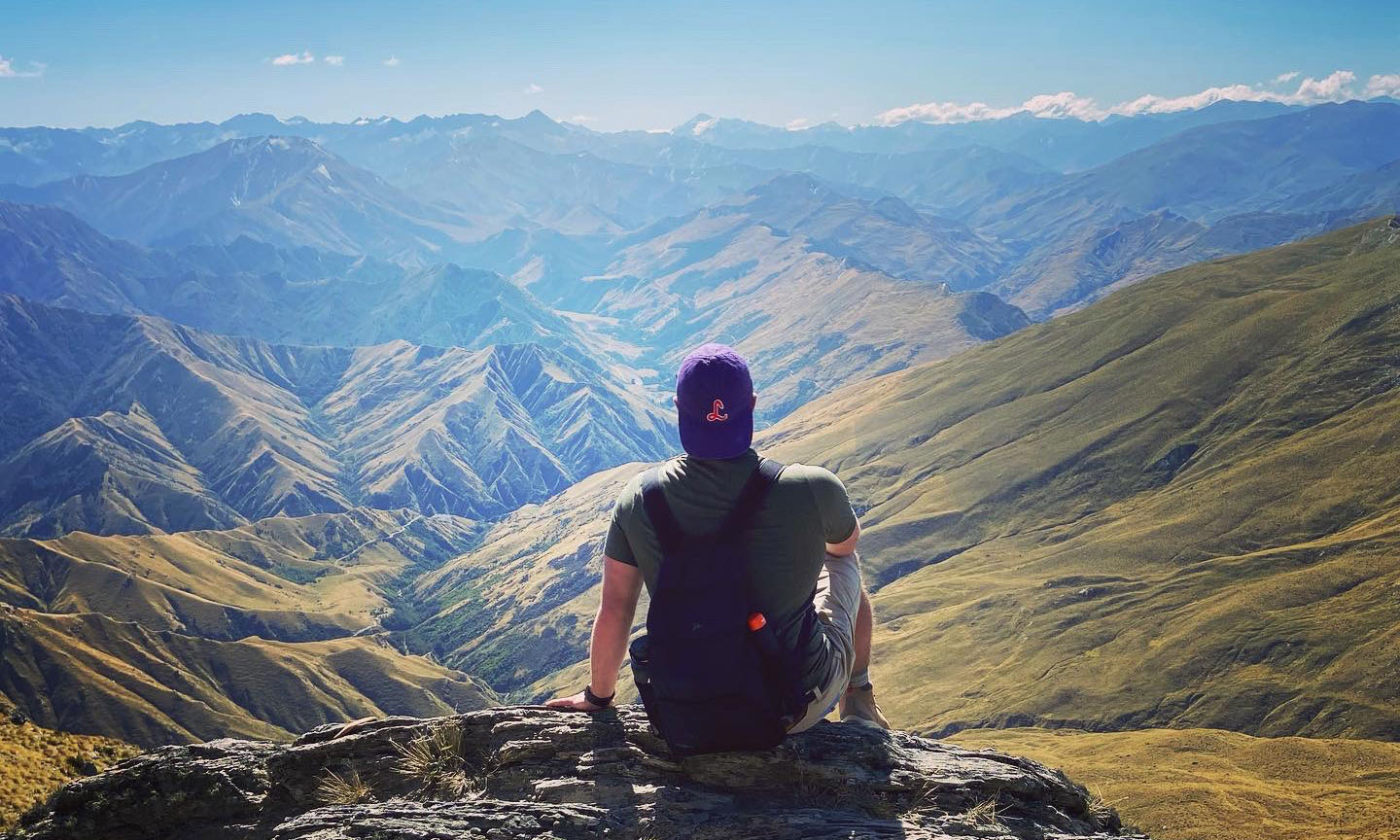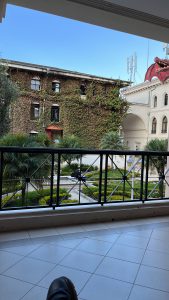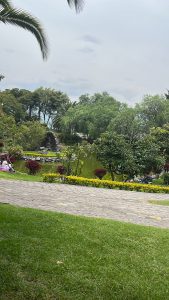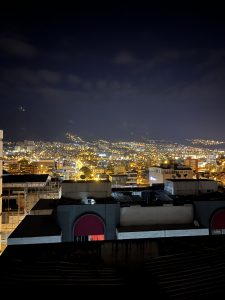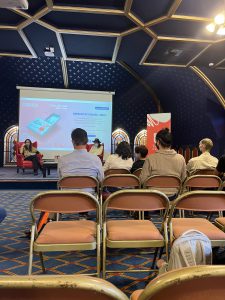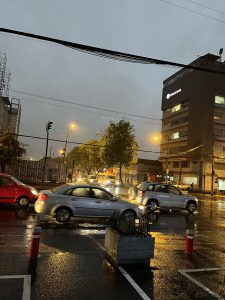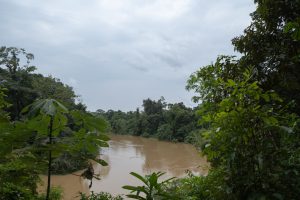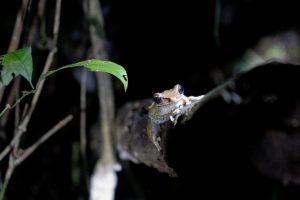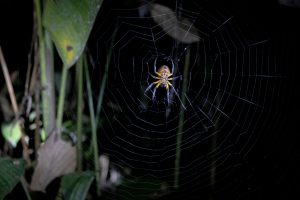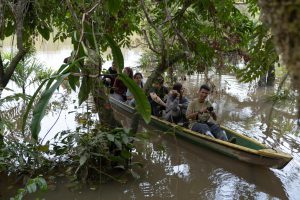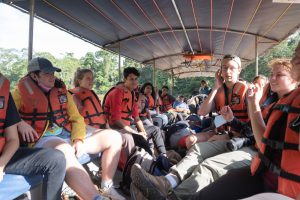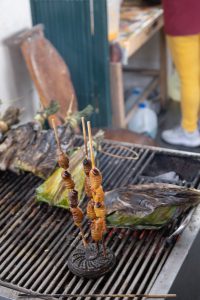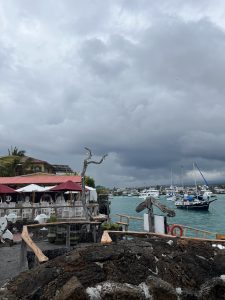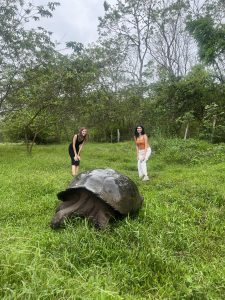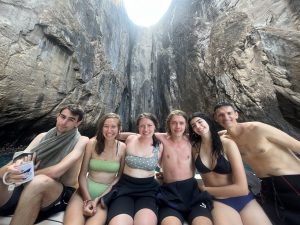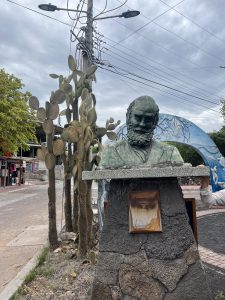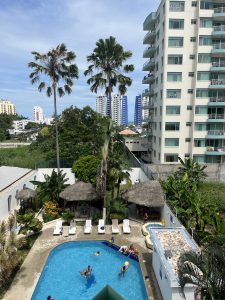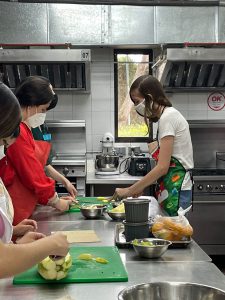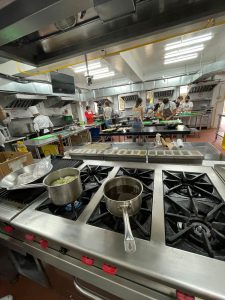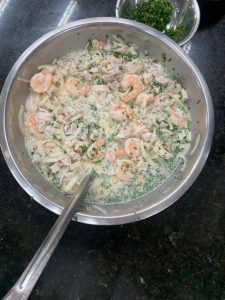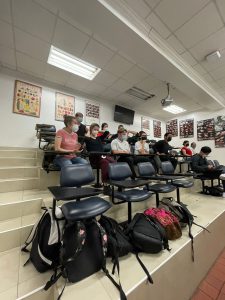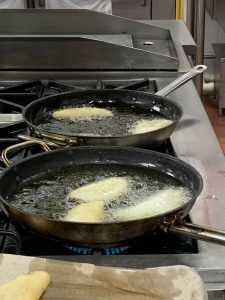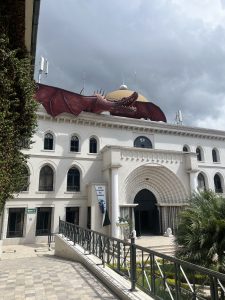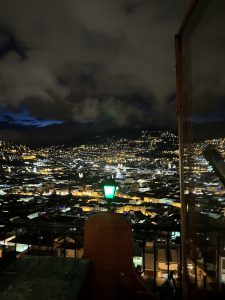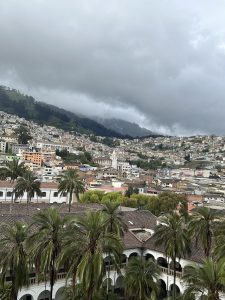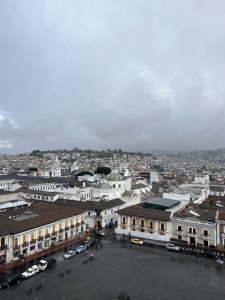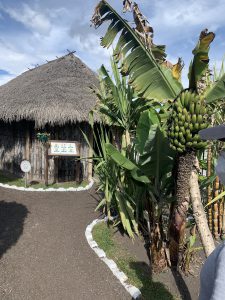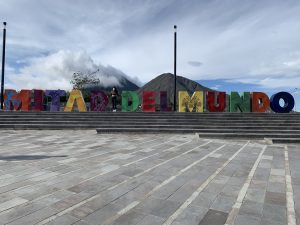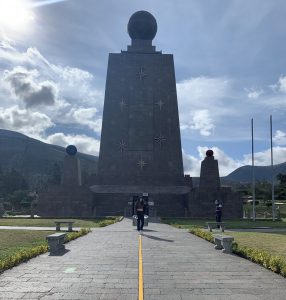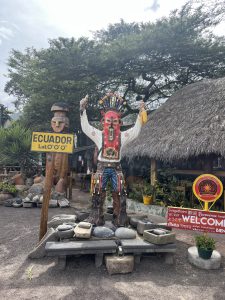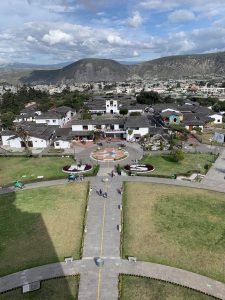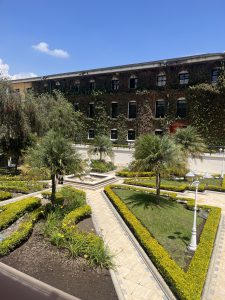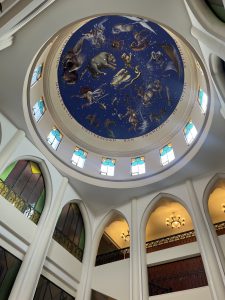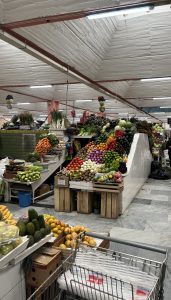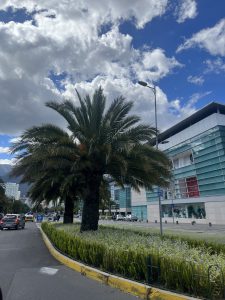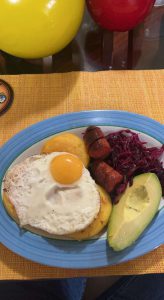Semana Santa or “Holy Week” is a time of religious practices but also cultural festivities. During the days leading up to Easter, it’s custom for families to gather this week to eat Fanesca which is a traditional soup served in this season. Fanesca is made with 12 different types of beans to represent the 12 apostles, and it’s considered a very complex dish. It’s a whole ordeal to make and not everyone makes it well, so it’s custom that the same person makes it each year. I had the opportunity to eat it twice this year since every family eats it on a different day and I was invited by two classmates. A lot of people don’t like fanesca and sometimes it’s even a debate among Ecuadorians if it’s good or not. I personally really liked it and I’m sad I likely won’t eat it again.
For Easter break, we only had one day off which was surprising to me since in other Catholic countries it’s a bigger deal and they get more than a week off. For the weekend I had plans to go to the coast with some friends, however, plans fell through 5 days before and I was left with nothing to do.
Thankfully, my best friend Sofia is very adventurous and we agreed we would take a spontaneous trip. Sofia is from New Jersey and she’s the international student I spend most of my time with. For this trip, we flew to Cuenca which is a beautiful colonial city to the south of Quito. While here, we spent our days going to museums, eating traditional food and simply walking around. I loved this break and it was super relaxing since Cuenca isn’t as busy and hectic as Quito and there’s not much going on. Although we flew in alone, while there, we found a group of students from our University in Ecuador and we became a little group. Overall, I think Cuenca is the most beautiful city I’ve visited in Ecuador and I’m super thankful that I was able to make good plans so quickly.
Un abrazo,
Salma Galvan
